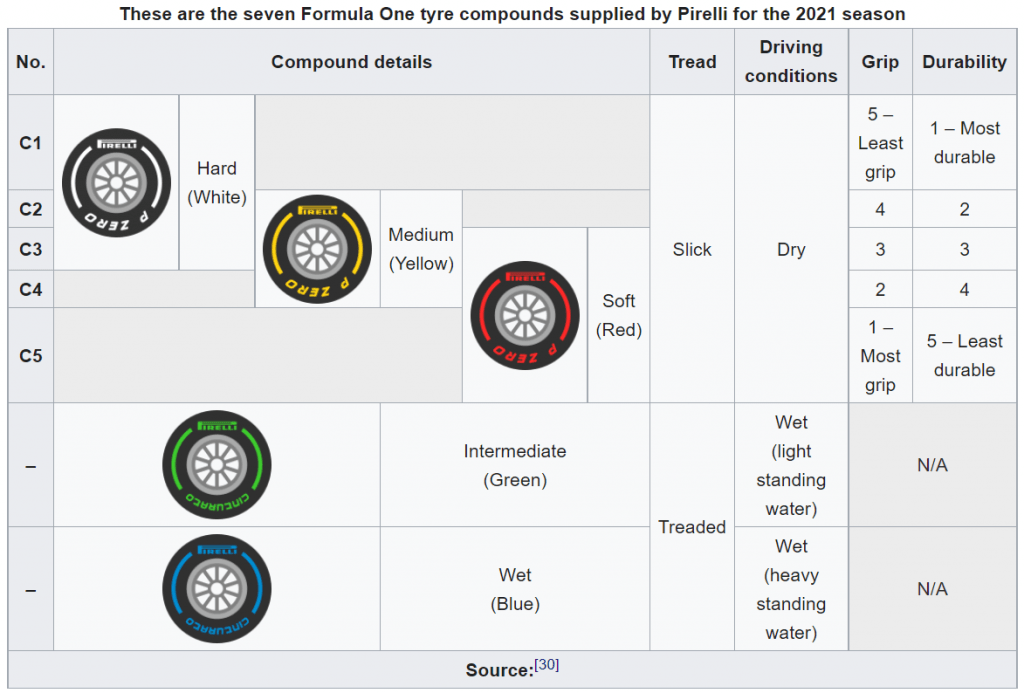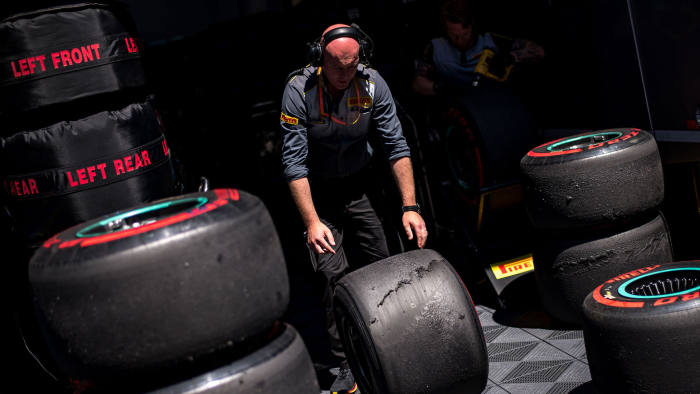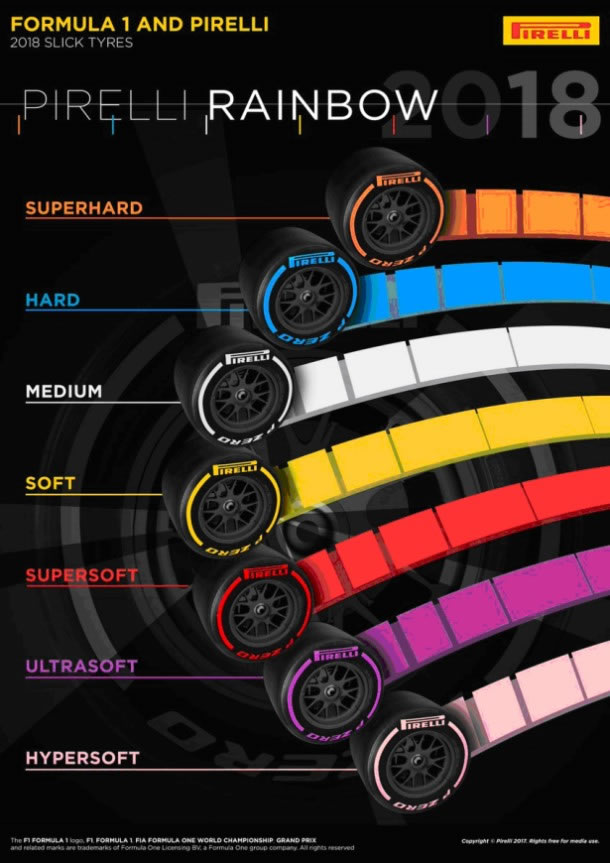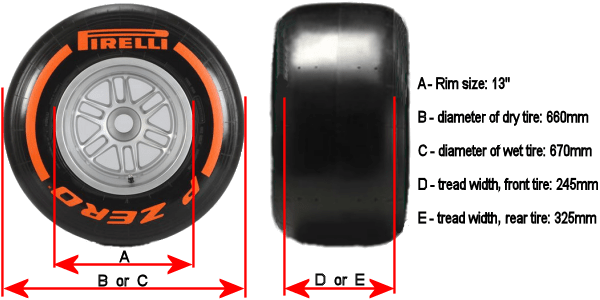Tyre Models used by F1 Teams
4 min readF1 tyres are the alphas of the tyre family. F1 race cars operate at high speeds and they rely on their tyres to withstand extreme conditions. Every year billions of dollars are spent into research and development of F1 tyres. But what makes these tyres different from your usual car tyres?
Tyre Anatomy and Composition
Approximately 40% to 60% of a tyre is rubber. A tyre’s composition generally includes four different kinds of rubber: natural rubber, styrene-butadiene rubber, polybutadiene rubber and butyl rubber. About 55 percent of a tyre’s rubber content is in the sidewall and tread, and companies use natural, styrene-butadiene and polybutadiene rubbers in these areas. Butyl rubber and halogenated butyl rubber make up the inner liner of a tyre [1].
The rubber mixture of a tyre in a standard passenger car is 55% synthetic and 45% natural rubber, while F1 tyres are composed of 10% natural rubber while the rest of the composition is synthetic. Yet as far as F1 tyres are concerned, an exact chemical composition is unavailable as manufacturers safeguard their tyre formulas [2].
Tyre Properties
Compared to standard passenger vehicle tyres, F1 tyres are soft. This is done to allow the tyre to sink into the track’s surface, hence providing exceptional grip while cornering. F1 tyres can withstand about 4.5 Gs which is more than 7 times greater [3] than the standard tyres.
F1 Tyre Manufacturers
Speaking about manufacturers, only one company is allowed to manufacture and provide tyres to all F1 teams in the interest of maintaining equal opportunity for all teams. In the last decade, Pirelli has been taking the contract for manufacturing and supplying these tyres. Other manufacturers are always competing for the coveted contract.
The competition among the manufacturers for taking the F1 contract is so immense that they safeguard their tyre formulas at all costs. So much so, that if a tyre were to burst during a race, the tyre company would ensure that each and every bit of the destroyed tyre on the track was accounted for and disposed off safely, so that other companies would not get their hands on the secret formula [5].
Types of F1 tyres
There are five types of F1 tyres [4], each serving a different purpose. These five types are broadly classified into 2 categories: dry and wet. As the name suggests, dry tyres are used in dry road conditions while the wet ones are used when the track is damp.
There are three types of dry tyres. All these have a slick thread where the outer surface of the tyre is smooth and devoid of any groove. These are differentiated by the level of hardness the surface possesses. The softer the tyres, the larger the ‘gripping’ ability.
The wet tyres are further classified into intermediate and wet. Intermediate are used when there is light standing water on the track while wet are used when there is heavy standing water on the track. Standing water here means the layer of water that gets deposited on the track during rain.

Tyre Usage in Formula One
In the final race of the Formula One Grand Prix, two sets of the medium and hard tyres are provided to each team by the race director. One set of soft tyres are allotted in the qualifying session, to help drivers in setting quick lap times. This is significant as the starting grid of the final race depends on the lap times in qualifying sessions. In the Free Practice (FP) sessions, drivers are allowed to use a maximum of three sets of dry tyres.
For drivers who qualify in dry tyres, the race must begin with the tyres used in the second session of qualifying. This applies to the top 10 drivers from the qualifying sessions.
For drivers that qualify outside the top 10, the race can begin with the tyres available to them.
Now the question arises, why are there so many tyres?
The answer lies in the rules set by the FIA. As per the FIA guidelines, a team must use at least two sets of tyres in the race. This is done in order to increase the challenge presented by the races, as drivers will not be using the tyre with highest grip at all times.
Interesting fact!
These alpha males of the tyre family are a result of cutting edge engineering, expensive R&D, and sheer hard-work of researchers. But the catch is that these tyres last through only 50 miles of usage, even though it is possible to build tyres with much more endurance having the same grip. The reason is that since the FIA sets the endurance race limit to 50 miles, manufacturers have to abide by these rules in order to get the contract for producing the tyres. Formula One officials stated that this was done in order to increase the thrill involved in the races [2].
—
This blog piece has been developed by Devashish Vashisth.
References
- [1]https://www.eng.auth.gr/mech0/lat/PM10/Tyre%20wear-tyre%20and%20particle%20composition.htm
- [2]https://www.youtube.com/watch?v=1vRXezUBLfU
- [3]http://racingcardynamics.com/racing-tyres-lateral-force/
- [4]http://www.formula1-dictionary.net/tires.html
- [5]https://www.youtube.com/watch?v=1vRXezUBLfU
- [X]https://en.wikipedia.org/wiki/Formula_One_tyres
- [X]https://www.pirelli.com/tires/en-us/motorsport/f1/tires


